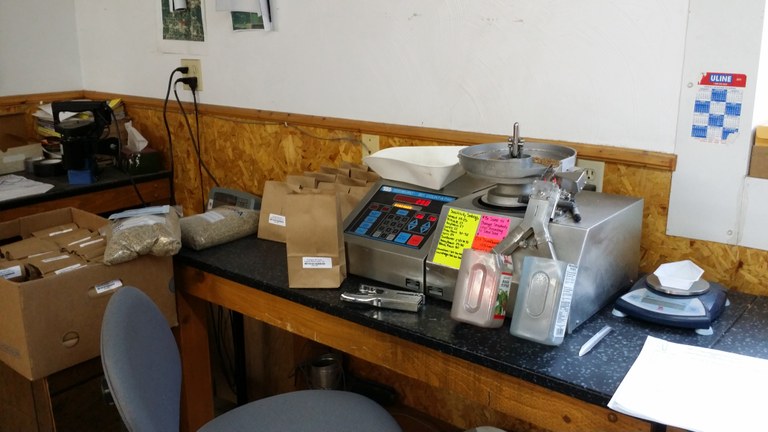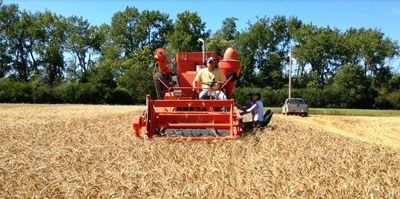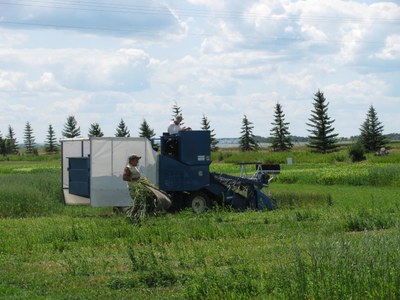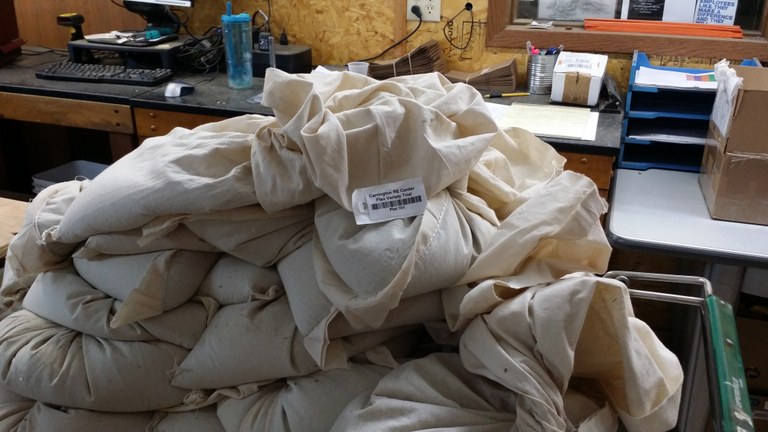The CREC Agronomy Laboratory
While fall is a particularly busy time in the CREC’s Agronomy Lab, there is plenty of work year-round. In early spring, seed samples begin to arrive. We test the germination on these samples and perform a seed count to determine seeds/pound and package seed into manila coin envelopes for planting. The amount of seed is weighed into these envelopes to achieve targeted plant population based on seed weight, germination and plot size. Most plot sizes are 5 feet by 25 feet. Some are bigger, for example, corn and sunflower plots are 5 feet (2 rows) by 30 feet. Envelopes are labeled with the appropriate plot number and replicate number (four replicates or more) and arranged in order in a tray that sits on the planter. During spring planting, we are often on the planters as it takes many staff members to plant the number of trials that we have. A team member is driving the tractor while another is on the planter with the tray of seed.

Seed Counter
Right now, we are in the plots with other agronomy staff taking physiological maturity notes and assisting with harvest. The CREC uses plot-size combines with no cab with the exception of the corn and sunflower plot combines. It takes three team members on one harvest crew, with one driving combine, one sitting on a chair on the side of the combine with bags that will collect the seed sample from a particular plot coming out a spout, and one securing the bag with a piece of twine.
Grain Harvester on left and Forage Harvester on right.


The harvest bags are prepared over the entire summer with a tag and stacked in order according to the plot randomization plan. Once the full bags get back to the lab, we place them in a dryer if they are wet. When dry, we will send them over a grain cleaner. Next we weigh each plot for yield, perform test weight and take a moisture sample. A small (½ cup) sample from each plot is placed in a paper bag to be sent in for either a protein, oil or starch analysis. In particular years, like this year, we will also save a deoxynivalenol (DON) sample, commonly referred to as vomitoxin, to send in for testing from each plot. A kernel weight on each plot is also performed with most of the trials.
We used to record all the measurements by hand and re-key the data, but a couple of years ago we automated the process by connecting data cables from the scales and moisture testers to one central computer with special Collect software. Each bag is tagged with a bar code, so it is scanned then placed on the scale and the yield weight, test weight and moisture automatically fill into an excel file next to the appropriate plot number. The data file is then released to the project leader so they can continue their research, compile results and make recommendations.

Bar code on harvest collection bag.
After measurements are recorded, most grain is marketed or will go to our livestock unit. Some commodities are donated to food pantries, and local FFA and 4-H students will often ask for samples to clean for show.
So what is the timeline for processing all the trials? We start immediately with the first trial coming off the combine which would be a winter cereal trial normally the beginning of August and usually finish in December. We then spend our winter months cleaning our pure seed and performing a germination test on all varieties that we will be placed into the CREC’s variety performance tests. We also spend a great deal of time going through harvest bags once they are empty and removing any remaining seed, chaff, and debris from the bags so they are ready to be reused again when the time comes.
If you’ve been out to the CREC lately, you’ll see construction is progressing nicely for a new Agronomy Lab that will house all of the current lab personnel and functions and also provide office, workspace and laboratory facilities for Pathology and Soil Science. If you are ever passing by, stop in and see us!
Kelly Bjerke
Lab Technician


